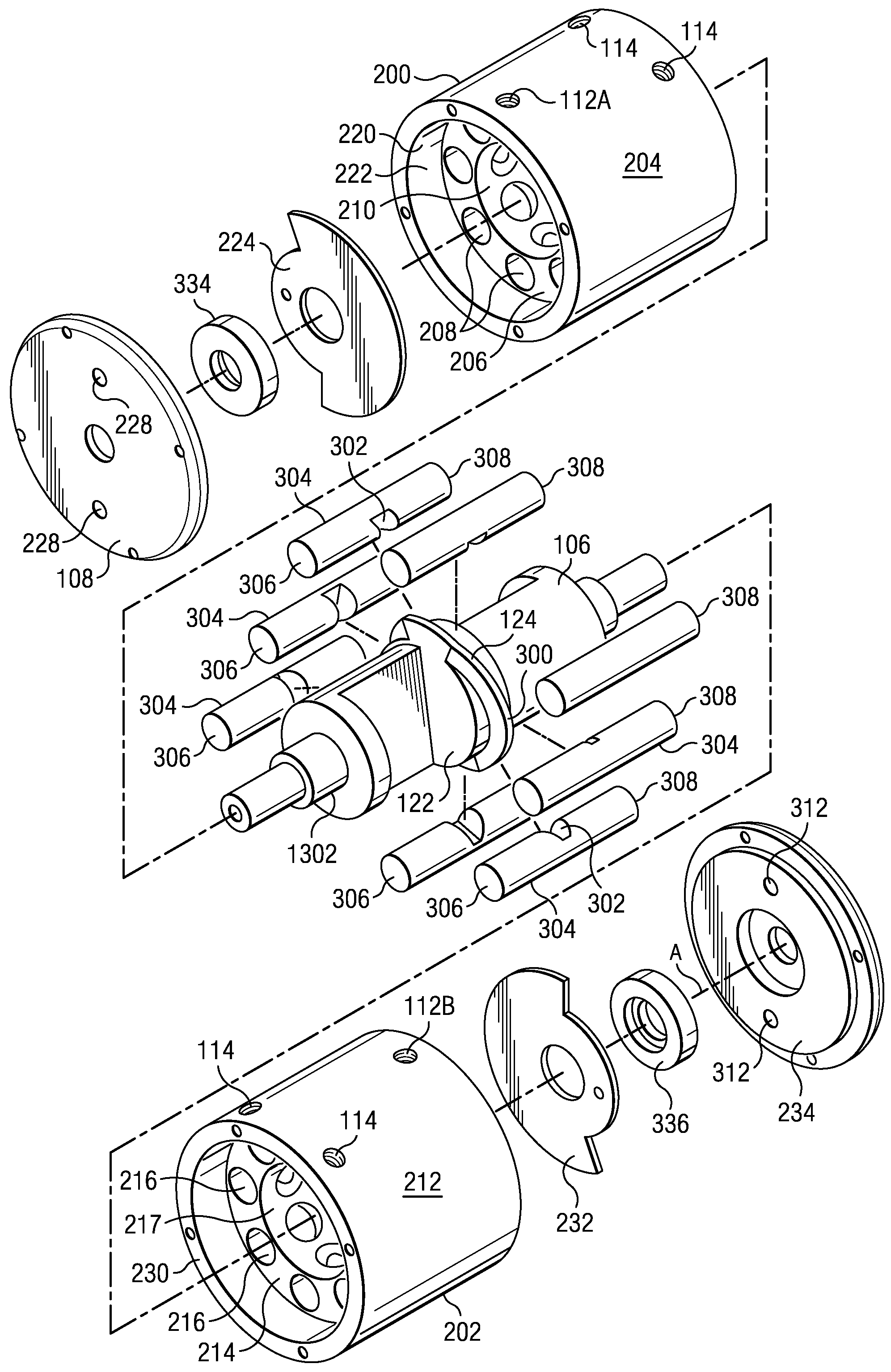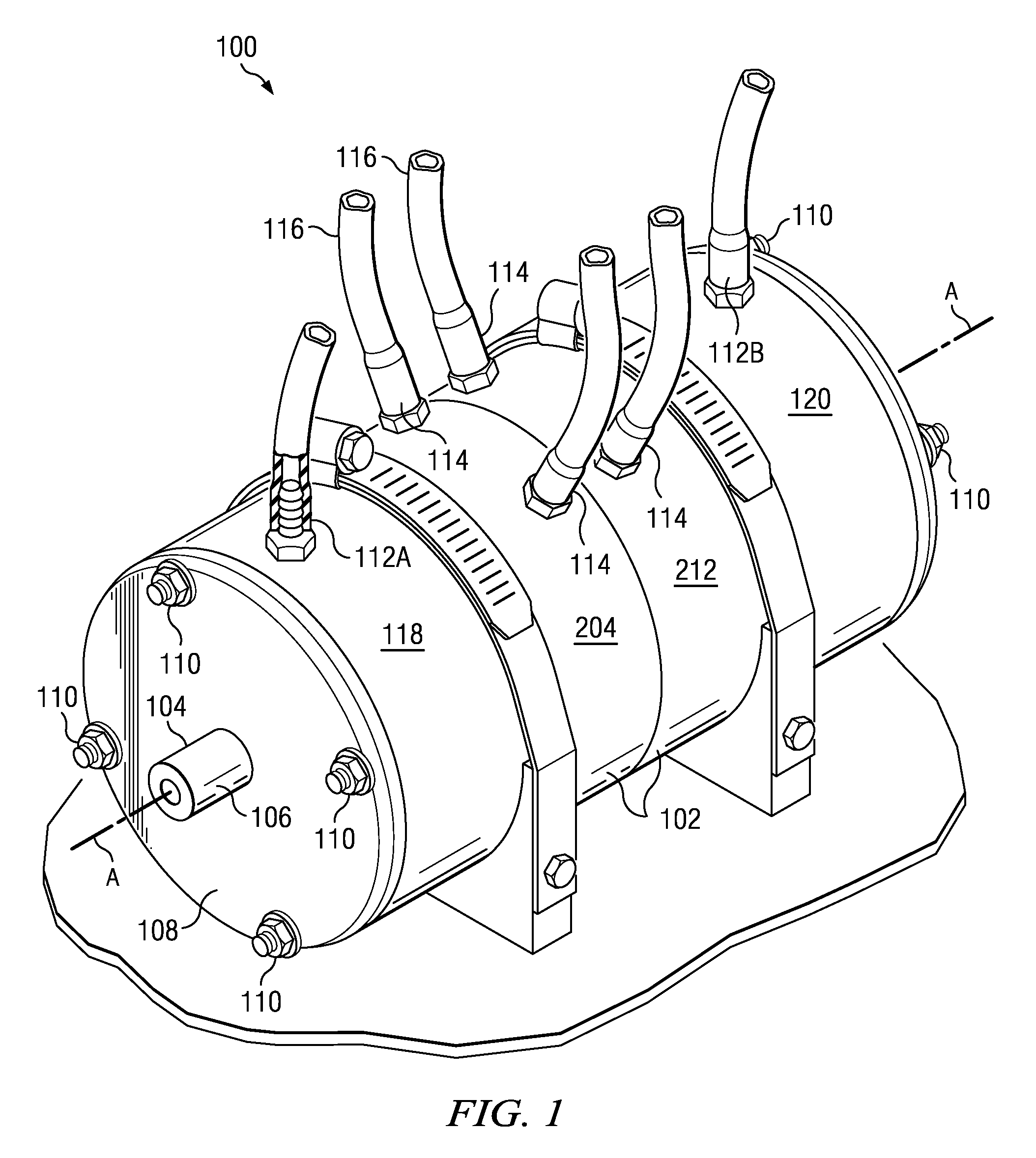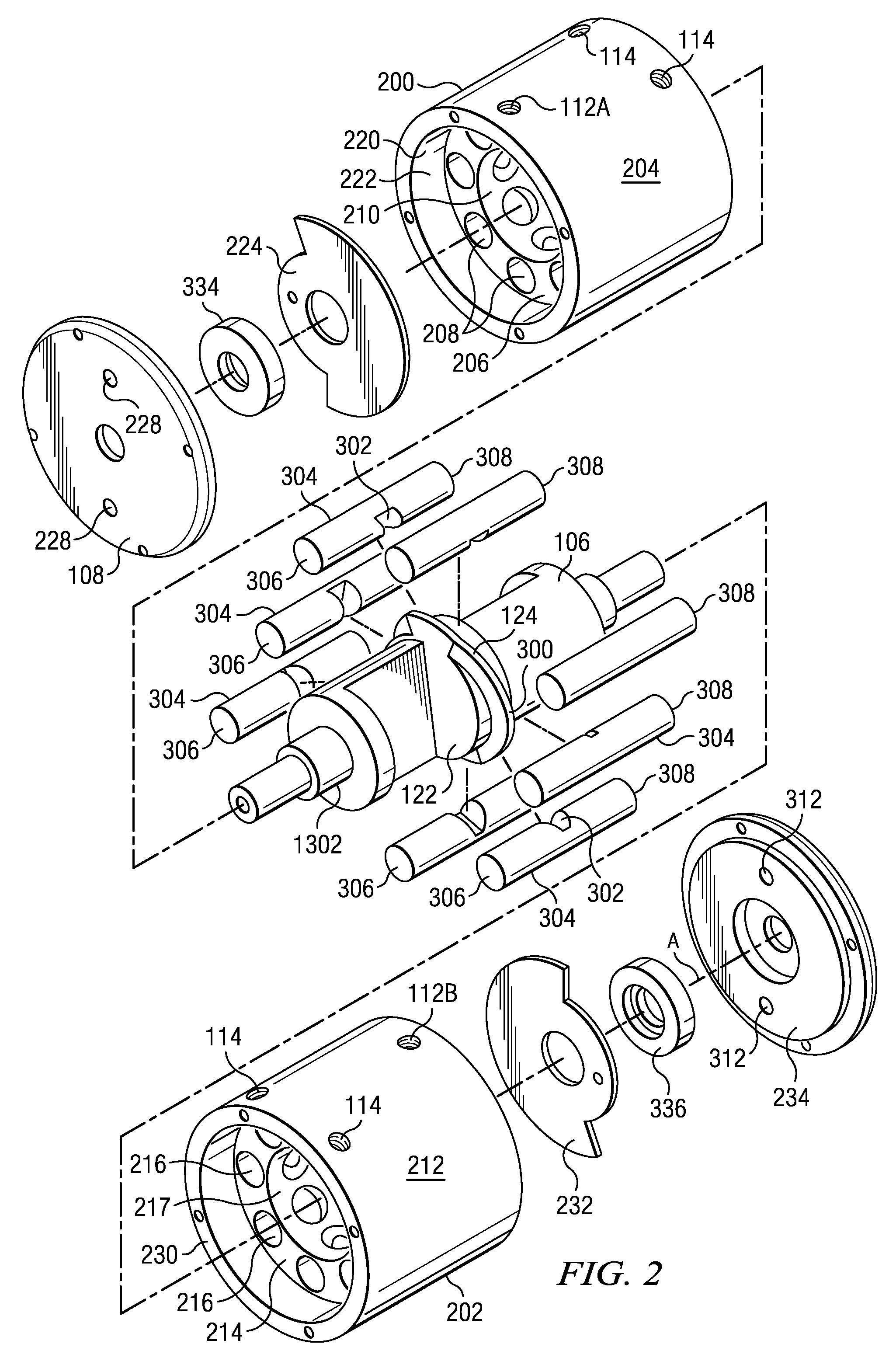Hydraulic pump
- Summary
- Abstract
- Description
- Claims
- Application Information
AI Technical Summary
Benefits of technology
Problems solved by technology
Method used
Image
Examples
Embodiment Construction
[0025]Referring first to FIG. 1, an isometric view is shown of a pump indicated generally at 100 according to a first embodiment of the invention. The pump 100 has an external cylindrical casing 102 which is formed around an axis A. One end 104 of a drive shaft 106 extends beyond an end cap 108, which in this embodiment is bolted to the casing 102 with through-bolts 110 which extend the entire axial length of the pump 100 and are parallel to axis A. Four bolts 110 are shown in the illustrated embodiment; for embodiments meant for higher-pressure applications, the number of bolts 110 could be increased. The drive shaft 106 is generally aligned with axis A although is not radially symmetrical throughout, as will be described below.
[0026]The pump 100 has at least one, and preferably two, outlet ports 112A and 112B through which a fluid is pumped. In the illustrated embodiment, the pump 100 further has several inlet ports 114 and these preferably are capable of introducing a greater vol...
PUM
 Login to View More
Login to View More Abstract
Description
Claims
Application Information
 Login to View More
Login to View More - R&D
- Intellectual Property
- Life Sciences
- Materials
- Tech Scout
- Unparalleled Data Quality
- Higher Quality Content
- 60% Fewer Hallucinations
Browse by: Latest US Patents, China's latest patents, Technical Efficacy Thesaurus, Application Domain, Technology Topic, Popular Technical Reports.
© 2025 PatSnap. All rights reserved.Legal|Privacy policy|Modern Slavery Act Transparency Statement|Sitemap|About US| Contact US: help@patsnap.com



